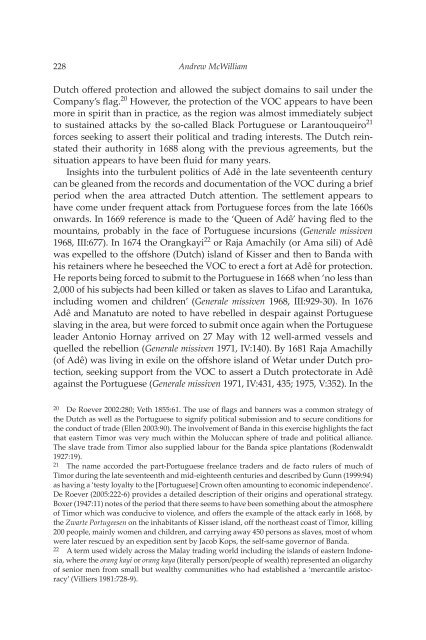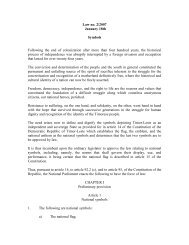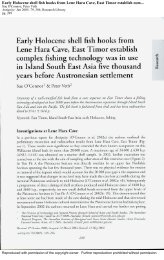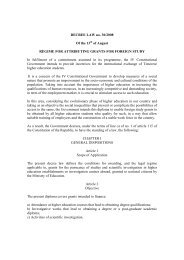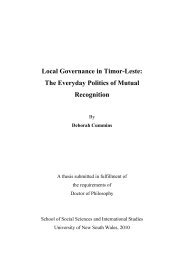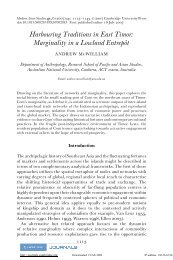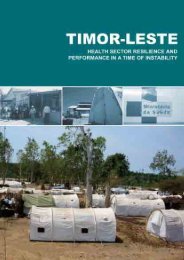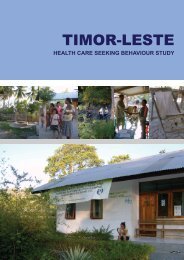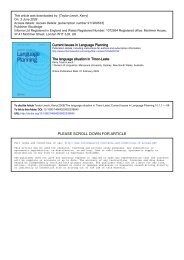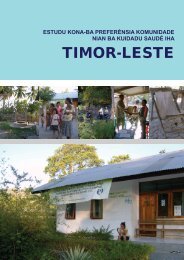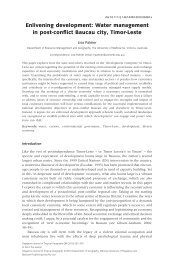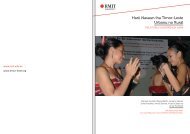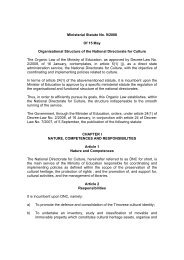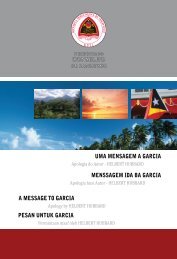Looking for Adê - Secretaria de Estado da Arte e Cultura
Looking for Adê - Secretaria de Estado da Arte e Cultura
Looking for Adê - Secretaria de Estado da Arte e Cultura
Create successful ePaper yourself
Turn your PDF publications into a flip-book with our unique Google optimized e-Paper software.
228Andrew McWilliamDutch offered protection and allowed the subject domains to sail un<strong>de</strong>r theCompany’s flag. 20 However, the protection of the VOC appears to have beenmore in spirit than in practice, as the region was almost immediately subjectto sustained attacks by the so-called Black Portuguese or Larantouqueiro 21<strong>for</strong>ces seeking to assert their political and trading interests. The Dutch reinstatedtheir authority in 1688 along with the previous agreements, but thesituation appears to have been fluid <strong>for</strong> many years.Insights into the turbulent politics of <strong>Adê</strong> in the late seventeenth centurycan be gleaned from the records and documentation of the VOC during a briefperiod when the area attracted Dutch attention. The settlement appears tohave come un<strong>de</strong>r frequent attack from Portuguese <strong>for</strong>ces from the late 1660sonwards. In 1669 reference is ma<strong>de</strong> to the ‘Queen of <strong>Adê</strong>’ having fled to themountains, probably in the face of Portuguese incursions (Generale missiven1968, III:677). In 1674 the Orangkayi 22 or Raja Amachily (or Ama sili) of <strong>Adê</strong>was expelled to the offshore (Dutch) island of Kisser and then to Ban<strong>da</strong> withhis retainers where he beseeched the VOC to erect a <strong>for</strong>t at <strong>Adê</strong> <strong>for</strong> protection.He reports being <strong>for</strong>ced to submit to the Portuguese in 1668 when ‘no less than2,000 of his subjects had been killed or taken as slaves to Lifao and Larantuka,including women and children’ (Generale missiven 1968, III:929-30). In 1676<strong>Adê</strong> and Manatuto are noted to have rebelled in <strong>de</strong>spair against Portugueseslaving in the area, but were <strong>for</strong>ced to submit once again when the Portugueselea<strong>de</strong>r Antonio Hornay arrived on 27 May with 12 well-armed vessels andquelled the rebellion (Generale missiven 1971, IV:140). By 1681 Raja Amachilly(of <strong>Adê</strong>) was living in exile on the offshore island of Wetar un<strong>de</strong>r Dutch protection,seeking support from the VOC to assert a Dutch protectorate in <strong>Adê</strong>against the Portuguese (Generale missiven 1971, IV:431, 435; 1975, V:352). In the20 De Roever 2002:280; Veth 1855:61. The use of flags and banners was a common strategy ofthe Dutch as well as the Portuguese to signify political submission and to secure conditions <strong>for</strong>the conduct of tra<strong>de</strong> (Ellen 2003:90). The involvement of Ban<strong>da</strong> in this exercise highlights the factthat eastern Timor was very much within the Moluccan sphere of tra<strong>de</strong> and political alliance.The slave tra<strong>de</strong> from Timor also supplied labour <strong>for</strong> the Ban<strong>da</strong> spice plantations (Ro<strong>de</strong>nwaldt1927:19).21 The name accor<strong>de</strong>d the part-Portuguese freelance tra<strong>de</strong>rs and <strong>de</strong> facto rulers of much ofTimor during the late seventeenth and mid-eighteenth centuries and <strong>de</strong>scribed by Gunn (1999:94)as having a ‘testy loyalty to the [Portuguese] Crown often amounting to economic in<strong>de</strong>pen<strong>de</strong>nce’.De Roever (2005:222-6) provi<strong>de</strong>s a <strong>de</strong>tailed <strong>de</strong>scription of their origins and operational strategy.Boxer (1947:11) notes of the period that there seems to have been something about the atmosphereof Timor which was conducive to violence, and offers the example of the attack early in 1668, bythe Zwarte Portugeesen on the inhabitants of Kisser island, off the northeast coast of Timor, killing200 people, mainly women and children, and carrying away 450 persons as slaves, most of whomwere later rescued by an expedition sent by Jacob Kops, the self-same governor of Ban<strong>da</strong>.22 A term used wi<strong>de</strong>ly across the Malay trading world including the islands of eastern Indonesia,where the orang kayi or orang kaya (literally person/people of wealth) represented an oligarchyof senior men from small but wealthy communities who had established a ‘mercantile aristocracy’(Villiers 1981:728-9).


